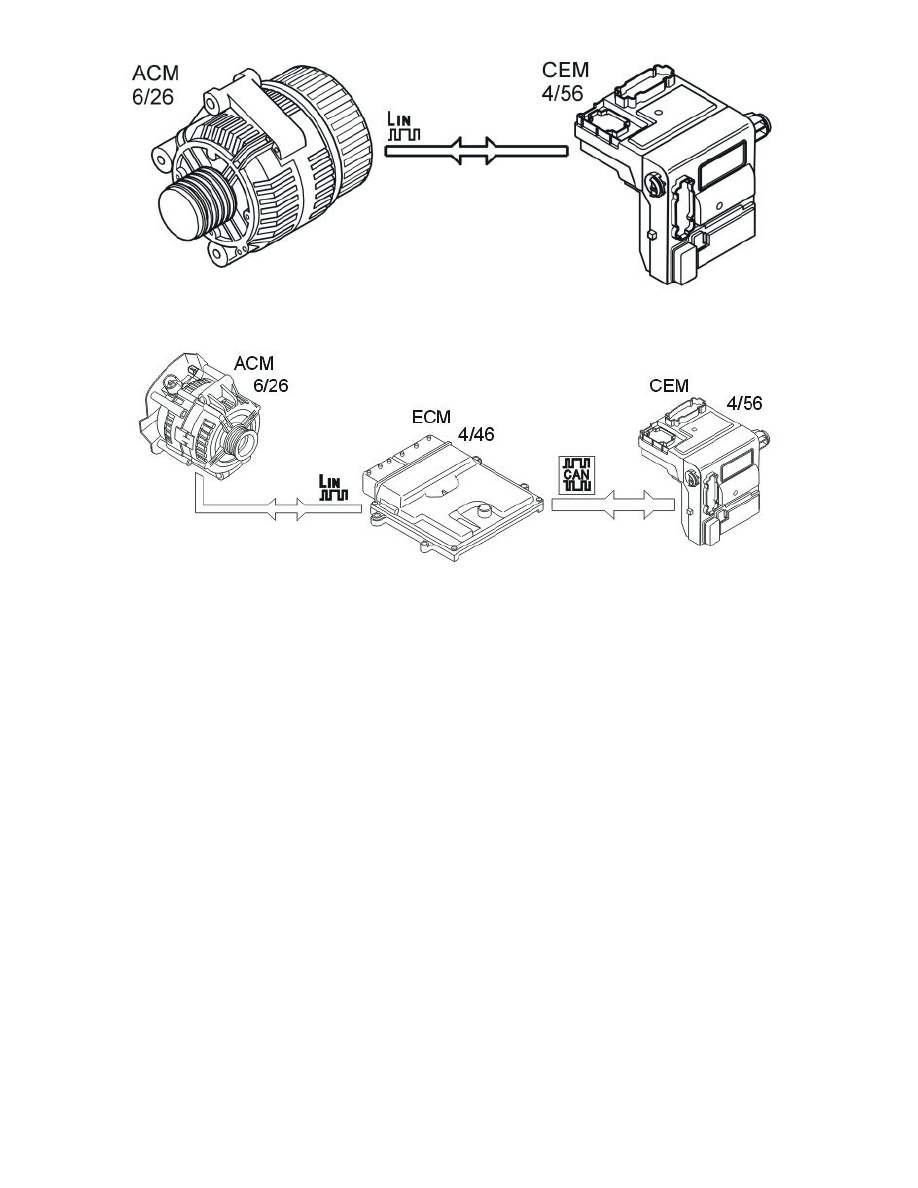XC90 AWD L5-2.5L Turbo VIN 59 B5254T2 (2005)

The above illustrations depict the two different types of connections for the alternator's regulator.
Depending on the model year and type of engine management system, the charge regulator (also known as the alternator control module (ACM)) is
connected to either the central electronic module (CEM) or the engine control module (ECM). It communicates via LIN communication. For information
on connection, see the illustration above and the wiring diagram.
If the charge regulator is connected to the engine control module (ECM), the engine control module (ECM) then communicates with the central
electronic module (CEM) regarding alternator control via the controller area network (CAN).
The central electronic module (CEM) has built-in functions for regulating voltage level and current consumption in the vehicle. The central electronic
module (CEM) controls the charge regulator either directly or via the engine control module (ECM). In this manner, it also controls the current/voltage
produced by the alternator.
The generator does not initially charge when the engine is started. The charge increases successively when the engine has been started. When there is an
increase in load at the generator, the increase from 0 - 100% takes place over the course of a few seconds (this time varies slightly depending on the
operating mode the engine management system is in). This is to gradually increase the load on the engine during the start-up phase and to ensure the
engine starts.
If the engine speed (RPM) exceeds idle speed (the exact engine speed varies slightly depending on the mode the engine management system is in) during
this delay, or if the progressive increase is interrupted, full charge is obtained immediately.
If there is no communication with the charge regulator, the charge regulator will not start charging on start-up. The charge regulator can however self
magnetize the rotor and start charging. This occurs at engine speeds greater than approximately 2100 rpm. There is no charge engagement by stages with
self magnetization, the generator operates at full charge immediately.
When self magnetizing has begun, the generator (GEN) also charges at engine speeds below 2100 rpm.
Freewheel
